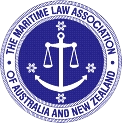Latest News
-
 AMSA to introduce new drug and alcohol policy March 28, 2025
AMSA to introduce new drug and alcohol policy March 28, 2025 -
 Swiss Re outlines further market hardening September 9, 2020
Swiss Re outlines further market hardening September 9, 2020 -
 Market readies for P&I loss as oil tanker in Sri Lanka catches fire September 9, 2020
Market readies for P&I loss as oil tanker in Sri Lanka catches fire September 9, 2020 -
 COVID-19 | Helpful tips for pleasure craft owner April 3, 2020
COVID-19 | Helpful tips for pleasure craft owner April 3, 2020 -
 IAG Announces COVID-19 Customer Support Package March 27, 2020
IAG Announces COVID-19 Customer Support Package March 27, 2020

